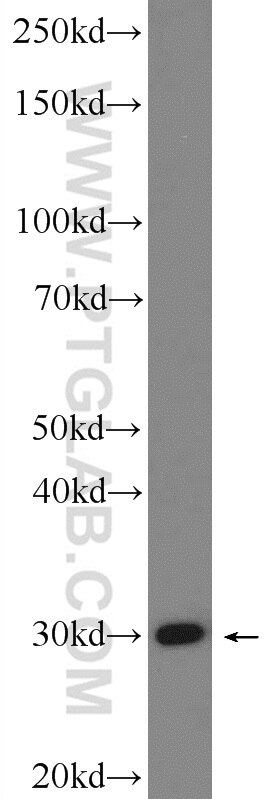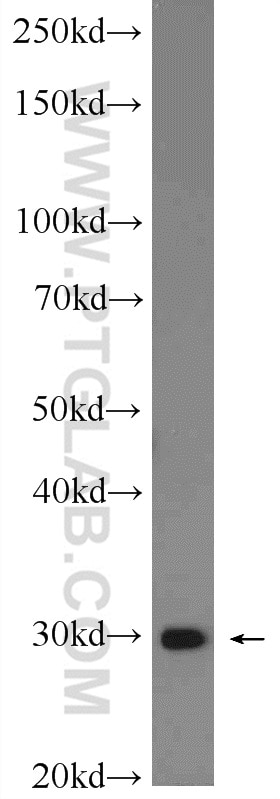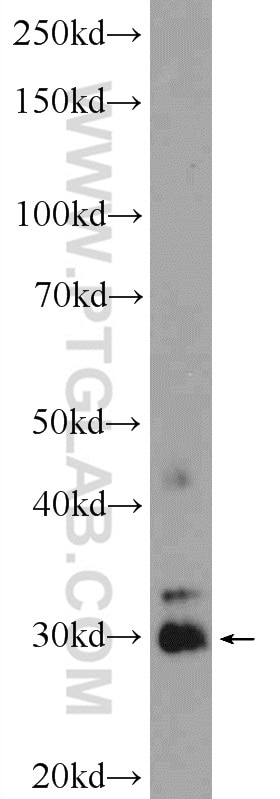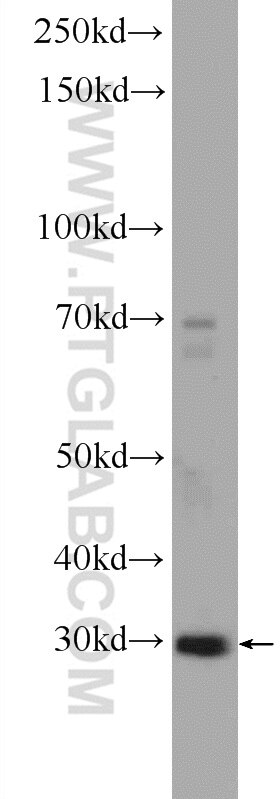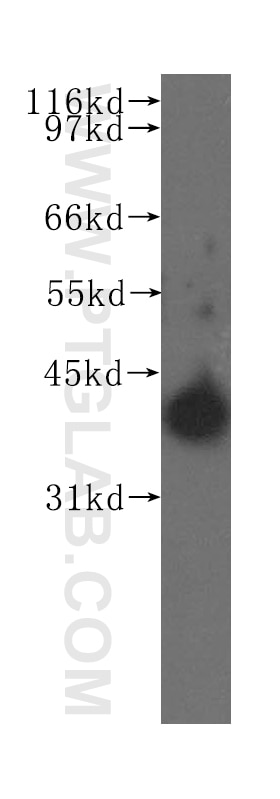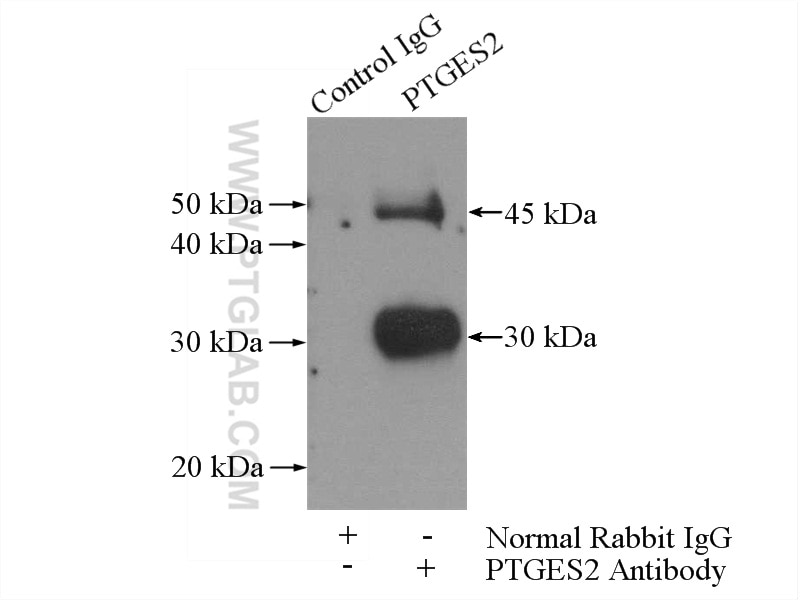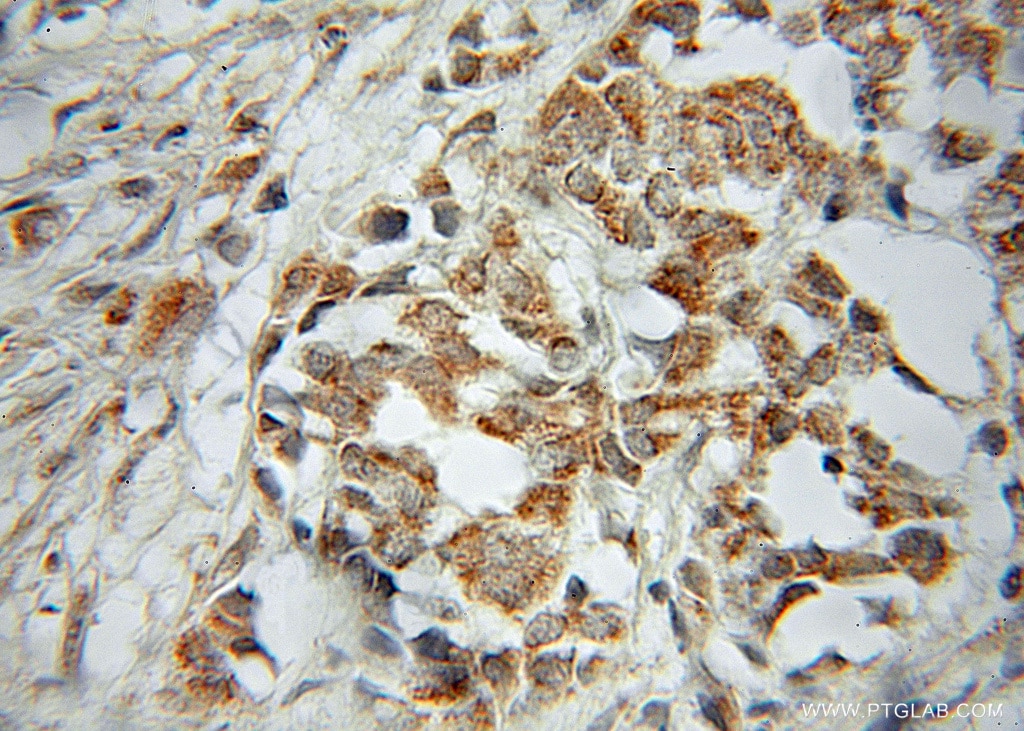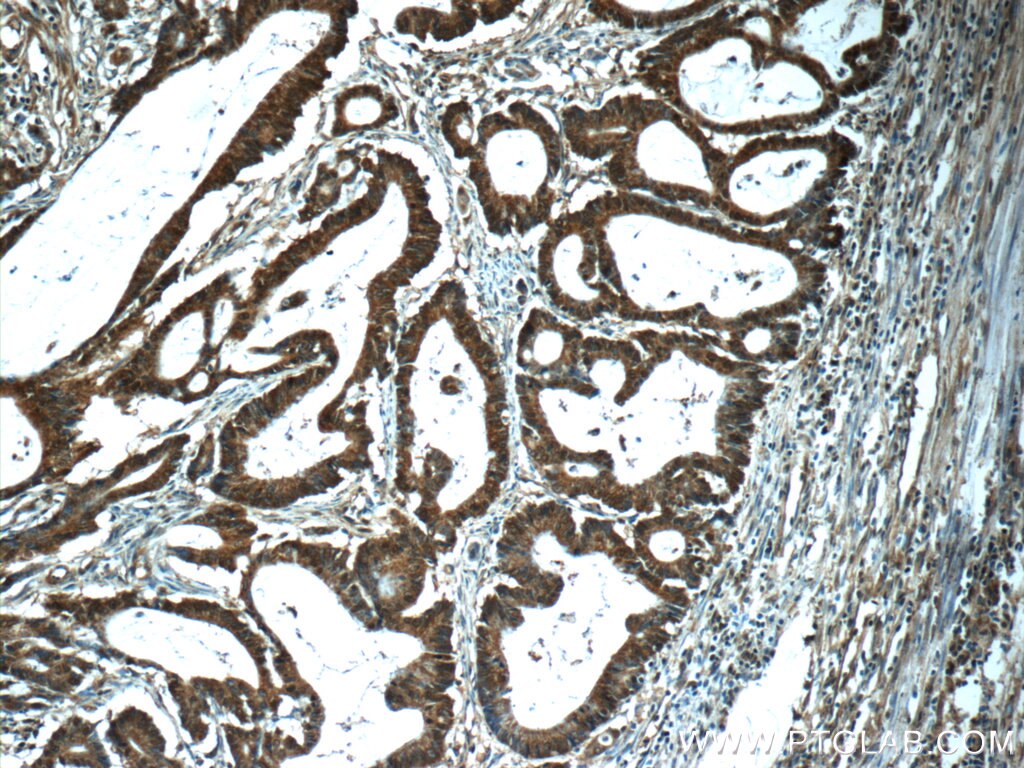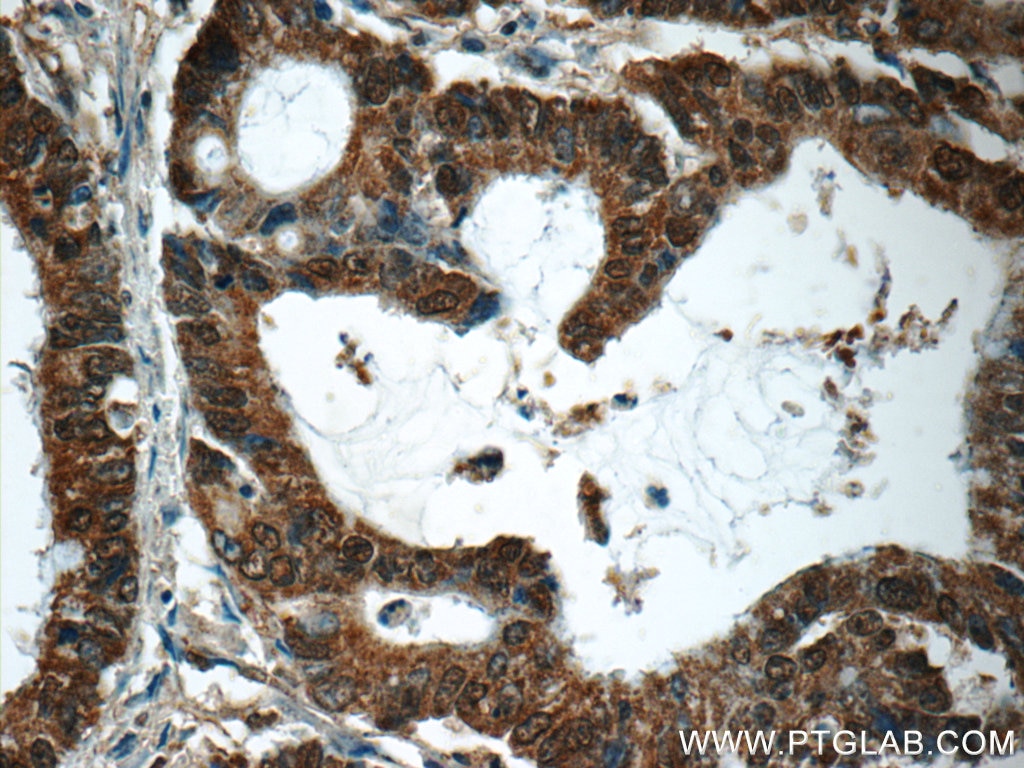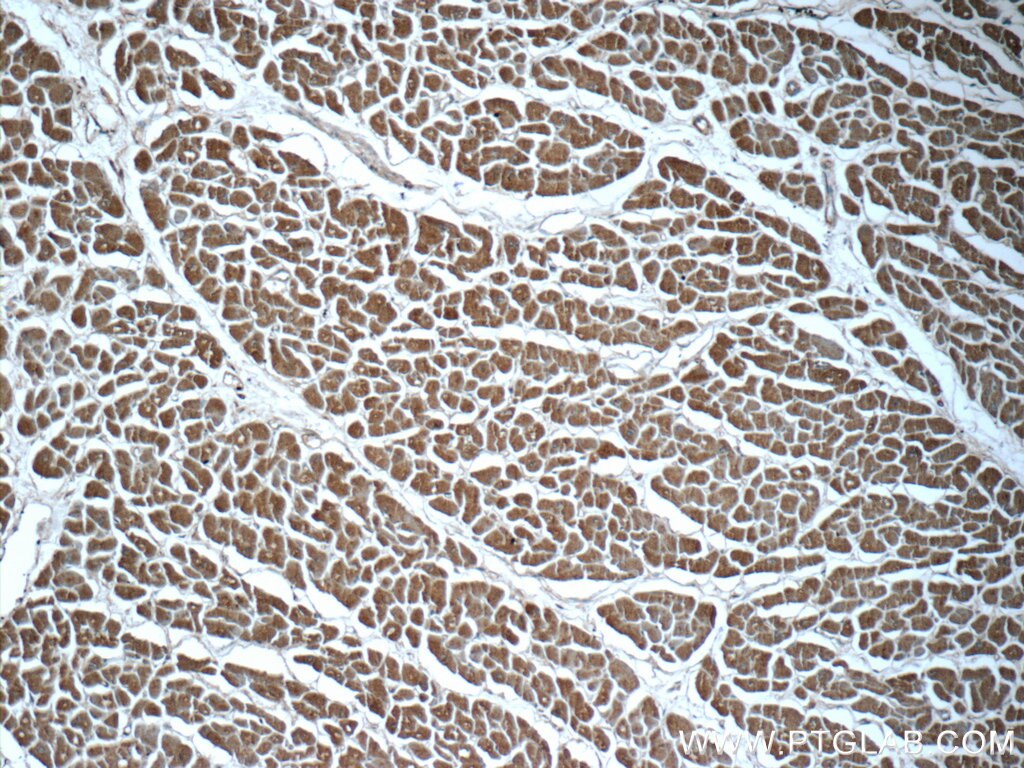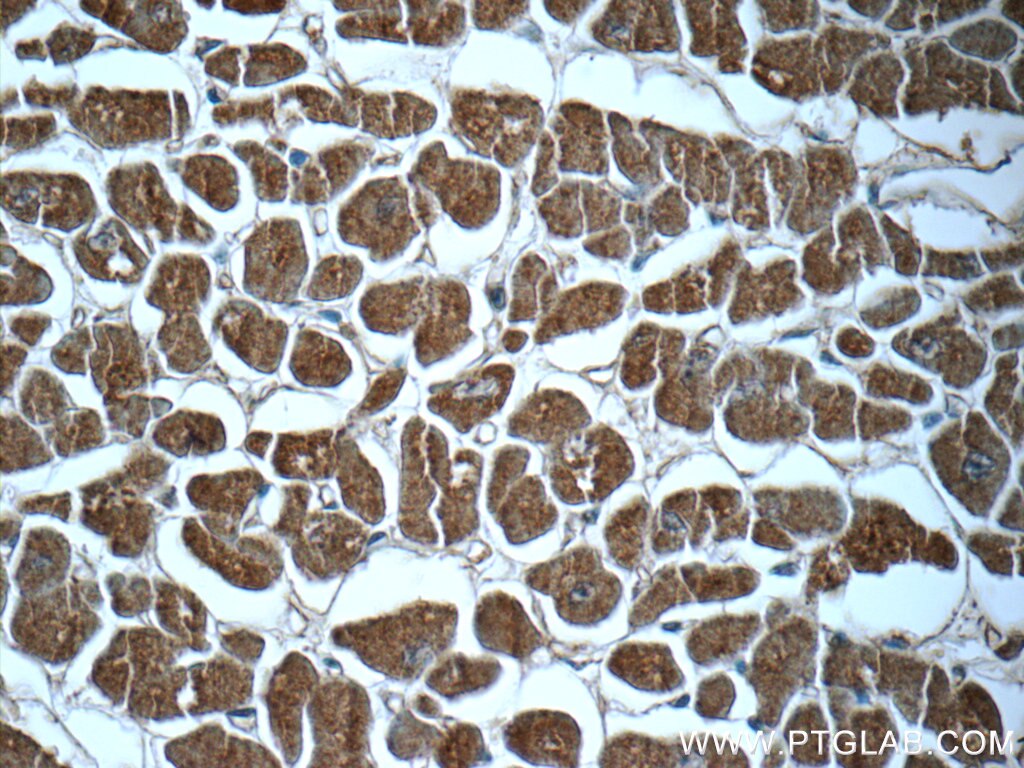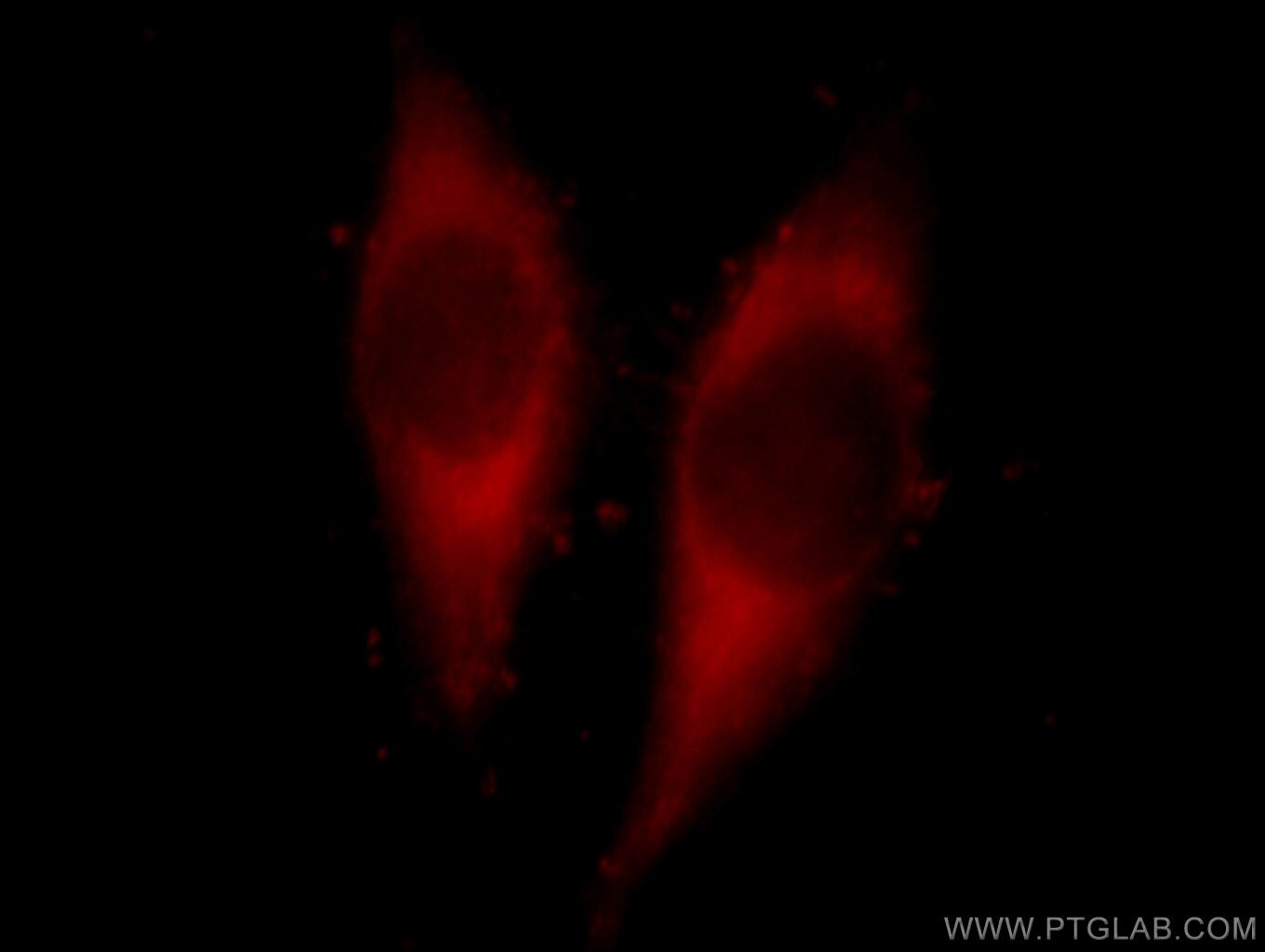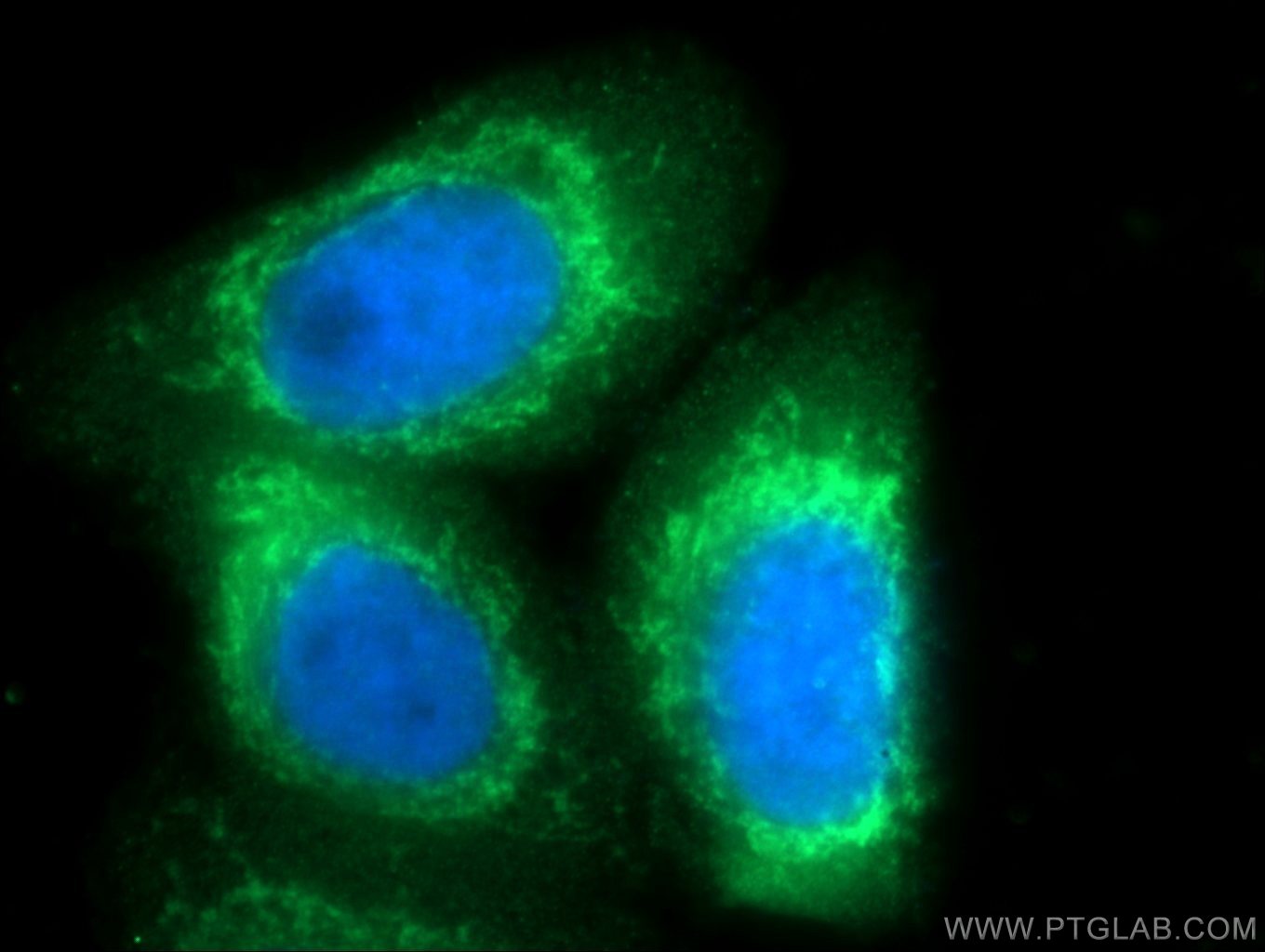- Featured Product
- KD/KO Validated
PTGES2 Polyklonaler Antikörper
PTGES2 Polyklonal Antikörper für WB, IHC, IF/ICC, IP, ELISA
Wirt / Isotyp
Kaninchen / IgG
Getestete Reaktivität
human, Maus, Ratte und mehr (1)
Anwendung
WB, IHC, IF/ICC, IP, ELISA
Konjugation
Unkonjugiert
Kat-Nr. : 10881-1-AP
Synonyme
Galerie der Validierungsdaten
Geprüfte Anwendungen
| Erfolgreiche Detektion in WB | HeLa-Zellen, HEK-293-Zellen, HepG2-Zellen, humanes Magengewebe, Mausherzgewebe |
| Erfolgreiche IP | Mausherzgewebe |
| Erfolgreiche Detektion in IHC | humanes Mammakarzinomgewebe, humanes Herzgewebe, humanes Kolonkarzinomgewebe Hinweis: Antigendemaskierung mit TE-Puffer pH 9,0 empfohlen. (*) Wahlweise kann die Antigendemaskierung auch mit Citratpuffer pH 6,0 erfolgen. |
| Erfolgreiche Detektion in IF/ICC | HeLa-Zellen, HepG2-Zellen |
Empfohlene Verdünnung
| Anwendung | Verdünnung |
|---|---|
| Western Blot (WB) | WB : 1:500-1:1000 |
| Immunpräzipitation (IP) | IP : 0.5-4.0 ug for 1.0-3.0 mg of total protein lysate |
| Immunhistochemie (IHC) | IHC : 1:20-1:200 |
| Immunfluoreszenz (IF)/ICC | IF/ICC : 1:10-1:100 |
| It is recommended that this reagent should be titrated in each testing system to obtain optimal results. | |
| Sample-dependent, check data in validation data gallery | |
Veröffentlichte Anwendungen
| KD/KO | See 2 publications below |
| WB | See 10 publications below |
| IHC | See 4 publications below |
Produktinformation
10881-1-AP bindet in WB, IHC, IF/ICC, IP, ELISA PTGES2 und zeigt Reaktivität mit human, Maus, Ratten
| Getestete Reaktivität | human, Maus, Ratte |
| In Publikationen genannte Reaktivität | human, Caenorhabditis elegans, Maus, Ratte |
| Wirt / Isotyp | Kaninchen / IgG |
| Klonalität | Polyklonal |
| Typ | Antikörper |
| Immunogen | PTGES2 fusion protein Ag1329 |
| Vollständiger Name | prostaglandin E synthase 2 |
| Berechnetes Molekulargewicht | 42 kDa |
| Beobachtetes Molekulargewicht | 30-35 kDa, 45 kDa |
| GenBank-Zugangsnummer | BC011613 |
| Gene symbol | PTGES2 |
| Gene ID (NCBI) | 80142 |
| Konjugation | Unkonjugiert |
| Form | Liquid |
| Reinigungsmethode | Antigen-Affinitätsreinigung |
| Lagerungspuffer | PBS mit 0.02% Natriumazid und 50% Glycerin pH 7.3. |
| Lagerungsbedingungen | Bei -20°C lagern. Nach dem Versand ein Jahr lang stabil Aliquotieren ist bei -20oC Lagerung nicht notwendig. 20ul Größen enthalten 0,1% BSA. |
Hintergrundinformationen
PTGES2 (Prostaglandin E synthase 2) catalyzes the conversion of unstable intermediate of prostaglandin E2 H2 (PGH2) into the more stable prostaglandin E2 (PGE2) form. Its predicted size is 42 kDa, but it was detected one band of 35 kDa in the prostate and two bands of 30 kDa, 50 kDa in liver by western blot (PMID:17566096). PTGES2 protein is a homotetramer, whereas two PTGES2 molecules each form a strongly interacting dimer(PMID:19268562).
Protokolle
| Produktspezifische Protokolle | |
|---|---|
| WB protocol for PTGES2 antibody 10881-1-AP | Protokoll herunterladen |
| IHC protocol for PTGES2 antibody 10881-1-AP | Protokoll herunterladen |
| IF protocol for PTGES2 antibody 10881-1-AP | Protokoll herunterladen |
| IP protocol for PTGES2 antibody 10881-1-AP | Protokoll herunterladen |
| Standard-Protokolle | |
|---|---|
| Klicken Sie hier, um unsere Standardprotokolle anzuzeigen |
Publikationen
| Species | Application | Title |
|---|---|---|
Brain Behav Immun Elevated β-secretase 1 expression mediates CD4+ T cell dysfunction via PGE2 signalling in Alzheimer's disease. | ||
Int Immunopharmacol Curc-mPEG454, a PEGylated curcumin derivative, as a multi-target anti-fibrotic prodrug. | ||
Tumour Biol Prostaglandin E2 (PGE2) promotes proliferation and invasion by enhancing SUMO-1 activity via EP4 receptor in endometrial cancer.
| ||
J Neuroimmunol Prostaglandin E2 increases the expression of cyclooxygenase-2 in cultured rat microglia. | ||
Int J Radiat Biol Coupling of oxidative stress responses to tricarboxylic acid cycle and prostaglandin E2 alterations in Caenorhabditis elegans under extremely low-frequency electromagnetic field. | ||
Oncol Lett Prostaglandin E2 triggers cytochrome P450 17α hydroxylase overexpression via signal transducer and activator of transcription 3 phosphorylation and promotes invasion in endometrial cancer. |
